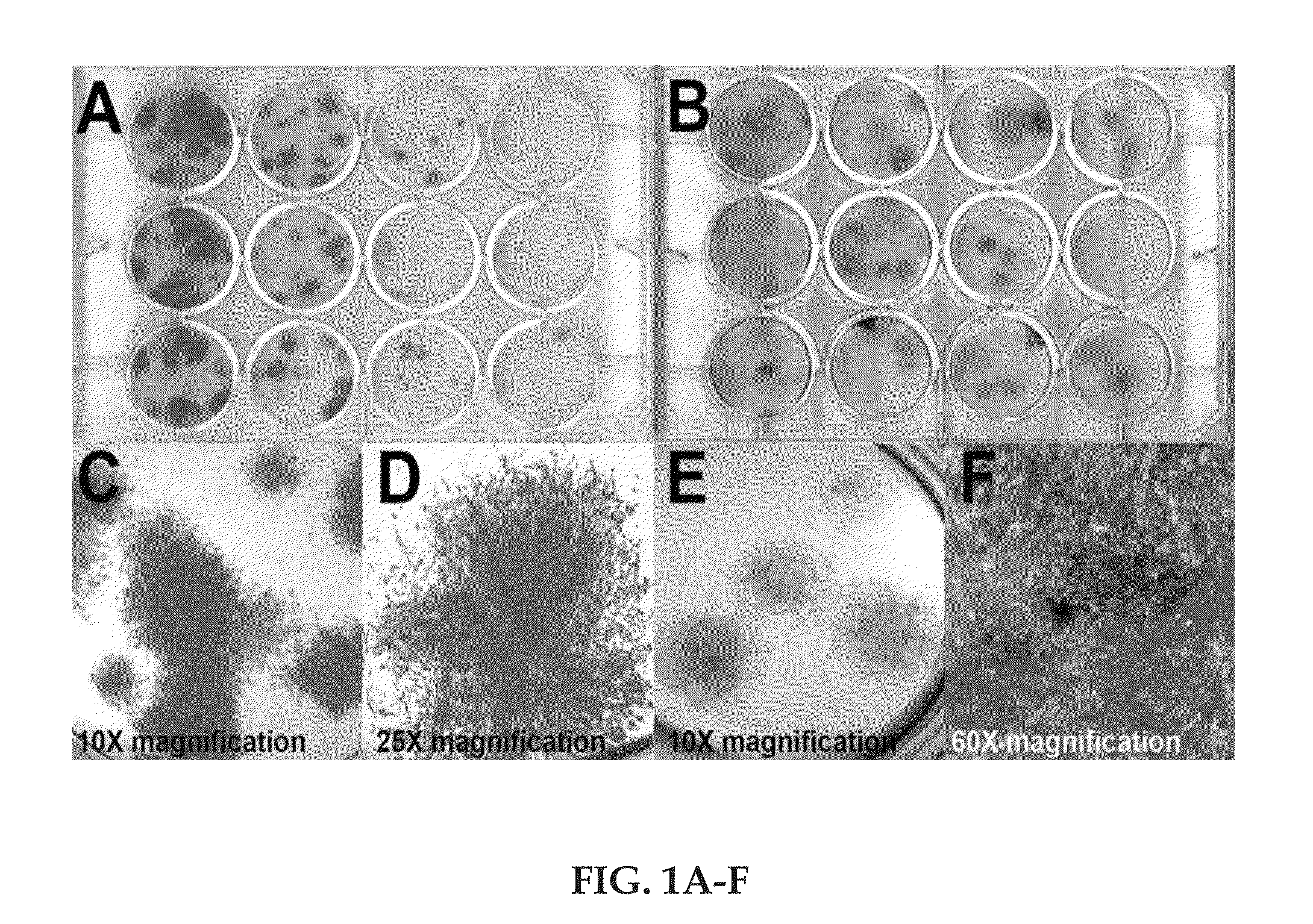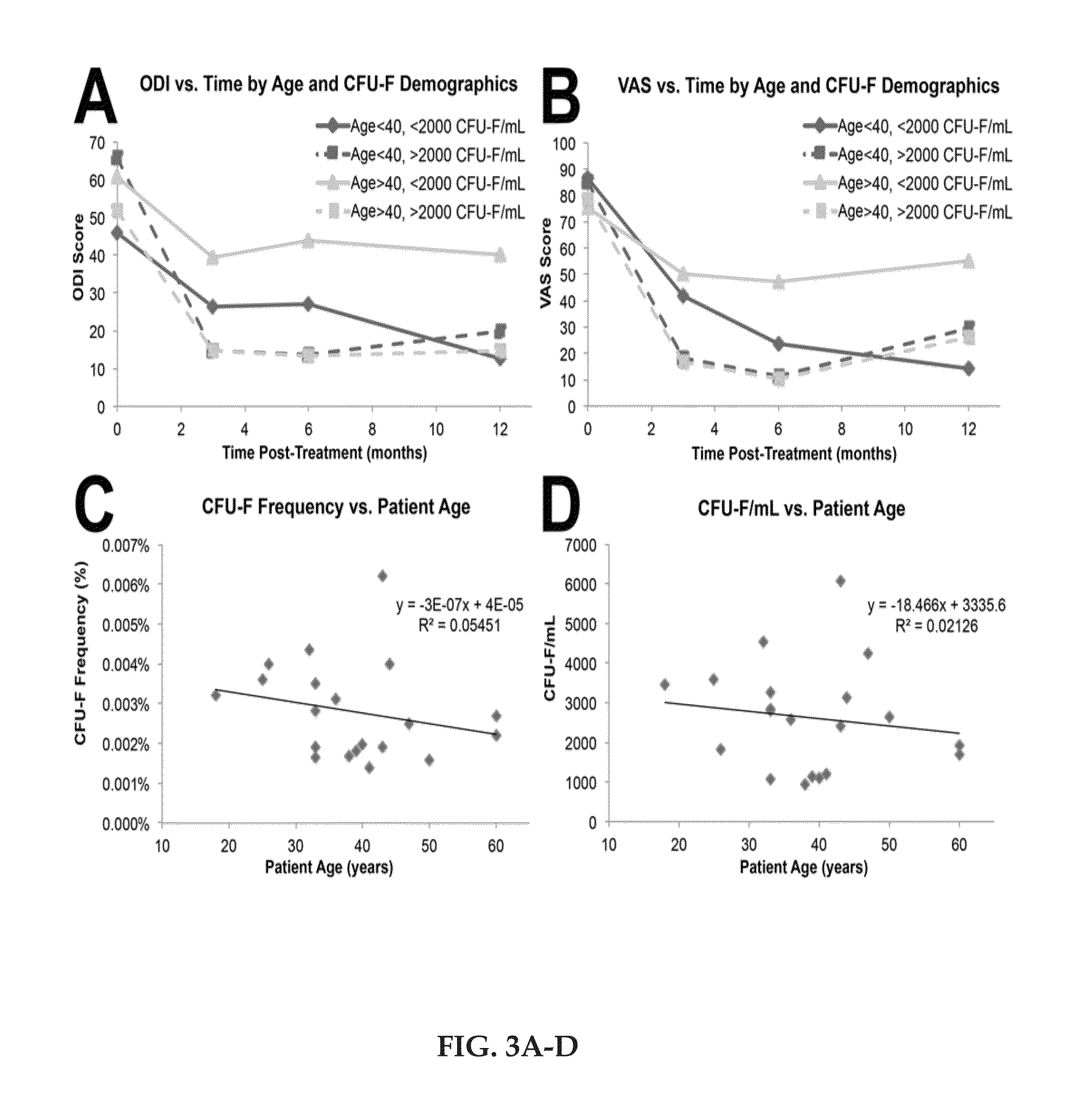Regenerative autologous bone marrow cell therapies and methods for their use in the treatment of joint pain
a bone marrow cell and autologous technology, applied in the field of cell therapies, can solve the problems of mechanical loading not being able to explain the ubiquitous degenerative changes, the force of mechanical loading on the intervertebral is created by gravity, and the pain is caused by vibration,
- Summary
- Abstract
- Description
- Claims
- Application Information
AI Technical Summary
Benefits of technology
Problems solved by technology
Method used
Image
Examples
example 1
[0030]In this example, 60 cc of bone marrow aspirate was collected over ACD-A as needed per process. The final volume of BMC was 2 cc per symptomatic disc. The marrow was processed using the bone marrow concentration system according to the detailed protocol. The patient was given IV antibiotics and placed prone on an image table. Intravenous Versed and Fentanyl was administered and the skin was anesthetized with buffered 1% Lidocaine. The aspirator was rinsed and the syringes were transferred with heparin solution, approximately 1000 U / ml. The heparin solution coated the inner surface of the 60 cc aspiration needle and trephine needle. The remaining heparin was expelled from the syringe. 6 cc of ACD-A was aspirated into the 60 cc syringe. Bone marrow was aspirated from the posterior iliac crest when the patient was positioned prone on a fluoro table. The right iliac wing was prepped and draped according to standard surgical protocols. A trephine needle and 60 cc syringe was used to...
example 2
[0032]Pre-treatment Oswestry Disability Index (ODI) and Visual Analogue Scale (VAS) were performed to establish baseline pain scores (average 56.5 and 79.3 respectively), while MRI was independently scored according to the modified Pfirrmann scale. Approximately 1 mL of BMC was analyzed for total nucleated cell (TNC) content, colony forming unit-fibroblast (CFU-F) frequency, differentiation potential, and phenotype characterization.
[0033]The average ODI and VAS scores were reduced to 22.8 and 29.2 at 3 months, 24.4 and 26.3 at 6 months, and 25.0 and 33.2 at 12 months, respectively (p≦0.0001). Eight of 20 patients improved by one modified Pfirrmann grade at one year. The average BMC contained 121×106 TNC / mL with 3,019 CFU-F / mL (synonymous with mesenchymal stem cells). Although all subjects presented a substantial reduction in pain, patients receiving greater than 2,000 CFU-F / mL experienced a faster and greater reduction in ODI and VAS. Subjects older than 40 years who received fewer ...
PUM
 Login to View More
Login to View More Abstract
Description
Claims
Application Information
 Login to View More
Login to View More - R&D
- Intellectual Property
- Life Sciences
- Materials
- Tech Scout
- Unparalleled Data Quality
- Higher Quality Content
- 60% Fewer Hallucinations
Browse by: Latest US Patents, China's latest patents, Technical Efficacy Thesaurus, Application Domain, Technology Topic, Popular Technical Reports.
© 2025 PatSnap. All rights reserved.Legal|Privacy policy|Modern Slavery Act Transparency Statement|Sitemap|About US| Contact US: help@patsnap.com



